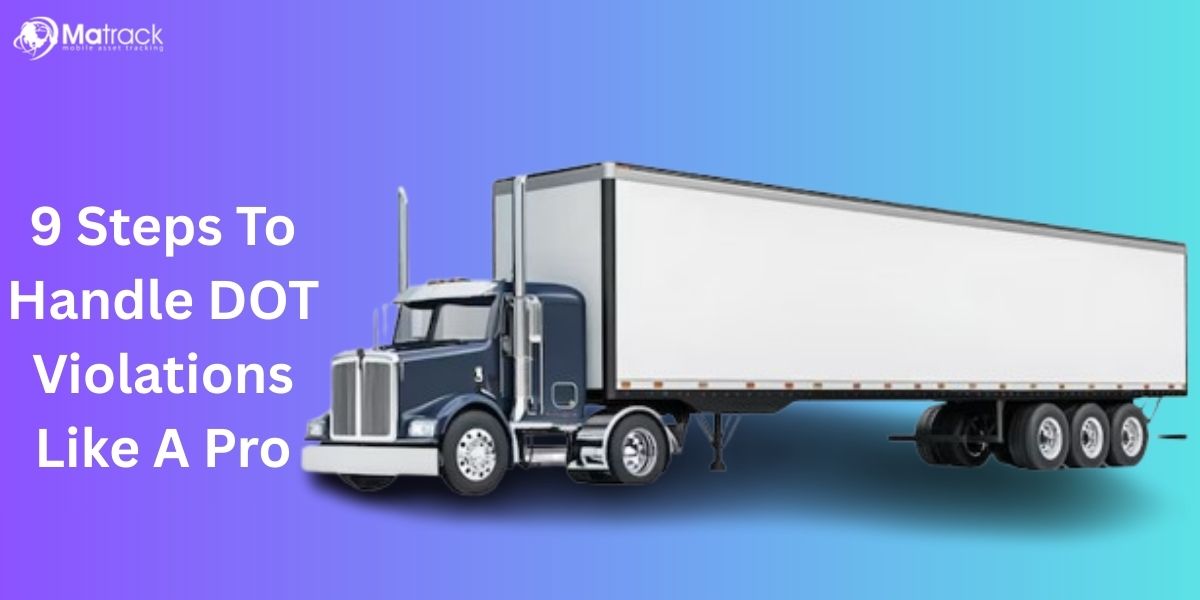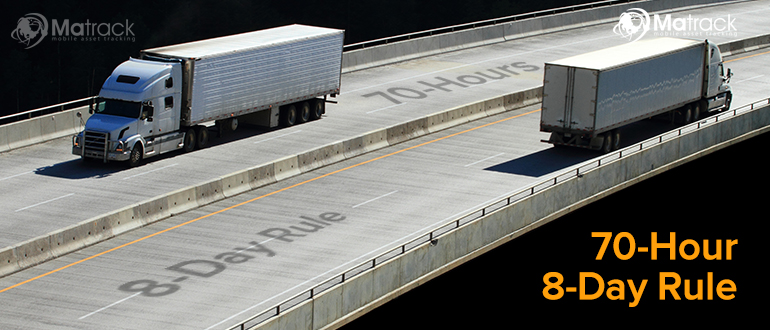8 levels of DOT Inspection are:
- North American Standard Inspection
- Walk-Around Driver / Vehicle Inspection
- Driver/Credential/Administrative Inspection
- Special Inspections
- Vehicle-Only Inspection
- Hazardous or Radioactive Material Inspection
- Jurisdiction-Specific Inspection
- Electronic Inspection
What is a dot inspection?
DOT inspection is a detailed assessment conducted by the U.S. Department of Transportation (DOT) to ensure commercial motor vehicles (CMVs) meet federal safety and operational standards. DOT inspections examine both the vehicle’s mechanical condition and the driver’s compliance with regulations.
Any commercial motor vehicle weighing over 10,000 pounds, transporting hazardous materials, or carrying passengers must undergo DOT inspections. The goal is to verify that vehicles and drivers are safe and meet federal requirements.
Expectations During a DOT Inspection
Drivers should pull over immediately when directed by an official and avoid arguing or questioning instructions. Staying calm and providing the required documents promptly helps ensure a smoother inspection process.
All logbooks must be accurate and up to date, and drivers should know how to access and email Electronic Logging Device (ELD) logs if needed. Licenses, permits, and other important paperwork should always be well-organized and easy to locate.
8 DOT Inspection Levels
Level I – North American Standard Inspection
Level I is the most detailed inspection. It starts with the driver and includes checks on the driver’s license, medical certificate, and record of duty status. Inspectors may test for drug or alcohol use and review service hours.
What’s Checked on the Vehicle:
- Brakes
- Tires and wheels
- Lights (headlamps, stop lamps, turn signals)
- Steering and suspension
- Fuel and exhaust systems
- Cargo securement
- Windshield wipers
- Wheels, rims, and hubs
For Passenger Vehicles (e.g., buses), Emergency exits, electrical cables, and battery compartments are also inspected.
Level II – Walk-Around Driver/Vehicle Inspection
Level II inspection is similar to Level I but less detailed. Inspectors focus on what they can see during a walk-around without getting under the vehicle.
What’s Checked:
- Driver credentials and documentation.
- Visible vehicle parts, like brakes, tires, lights, and cargo securement.
Key Point:
Inspectors don’t check components underneath the vehicle.
Level III – Driver/Credential/Administrative Inspection
Level III inspection is all about the driver. The vehicle is not inspected.
What’s Checked:
- Commercial driver’s license (CDL).
- Medical certificate and Skill Performance Evaluation (SPE) certificate.
- Hours-of-service (HOS) logs.
- Hazardous Materials (HAZMAT) Safety Permit (if required).
Key Point:
Proper documentation is essential. HOS violations or missing permits can lead to hefty penalties.
Level IV – Special Inspections
Level IV inspection focuses on a specific feature of the vehicle or driver. It is usually done for research or special investigations.
What’s Checked:
- One specific part of the vehicle, such as brakes or tires.
- Occasionally, driver-related items.
Key Point:
Rare and often unexpected.
Level V – Vehicle-Only Inspection
Level V inspection looks at the vehicle without the driver being present. It is often done at a carrier’s facility or during a safety audit.
What’s Checked:
- Everything included in Level I, such as brakes, tires, cargo securement, and lights.
Key Point:
It focuses solely on the mechanical and safety condition of the vehicle.
Level VI – Hazardous or Radioactive Material Inspection
Level VI inspection is for vehicles carrying radioactive or hazardous materials. It ensures that the cargo is secure and the driver is properly trained.
What’s Checked:
- Driver’s special training for hazardous materials.
- Containment systems for the cargo.
- Radiation levels and route safety.
Key Point:
The strictest inspection due to the risks involved with hazardous materials.
Level VII – Jurisdiction-Specific Inspection
Level VII inspection is designed to meet the specific requirements of individual jurisdictions or states.
It includes unique criteria not covered by federal DOT standards, often depending on local laws, regulations, or specific industry needs.
What’s Checked:
- Local jurisdictions, such as specific equipment or operational standards, mandate additional checks.
- Items like state-specific permits, local environmental compliance, or unique vehicle modifications.
Key Point:
Vary by location and are customized to address regional or industry-specific safety needs.
Level VIII – Electronic Inspection
Level VIII inspections are conducted electronically without requiring physical interaction between the driver and inspector. Uses telematics and electronic data transmission to verify real-time compliance.
What’s Checked:
- Electronic Logging Devices (ELDs) for Hours of Service (HOS) compliance.
- Automatic identification of the vehicle through RFID or similar technology.
- Data like weight, credentials, and carrier safety scores.
Key Point:
Very quick, contactless, and focus on real-time data to ensure compliance.
How to Prepare for DOT Inspections
Here’s a simple guide to ensure your fleet is ready for inspections:
Perform Pre-Trip Inspections
Drivers should inspect brakes, tires, lights, and mirrors before every trip to ensure the vehicle is in good condition. Cargo must also be secured properly, and any issues should be reported and fixed immediately. Read more about pre-trip inspection.
Keep Driver Documents Ready
All drivers should have a valid CDL and medical certificate at all times. Hours-of-service (HOS) logs, permits, and insurance documents must be updated and organized for easy access during inspections.
Use Electronic Logging Devices (ELDs)
Drivers should be trained to use ELDs and know how to access logs efficiently. They must also know how to email logs to DOT officials when requested. Learn about Electronic Logging Devices.
Schedule Regular Vehicle Maintenance
Fleet operators should follow a vehicle maintenance schedule to prevent unexpected mechanical failures. Focus on critical systems like brakes, suspension, fuel, and steering, and keep records of all repairs for inspections.
Train Drivers on Inspection Protocols
Drivers must be taught to stay calm and professional during inspections. They should understand what documents and equipment they need to present and how to answer questions confidently.
Conduct Internal Compliance Checks
Fleet operators should regularly review vehicle and driver records for accuracy. Auditing logbooks, permits, and maintenance reports can help fix issues before inspections happen.
Verify Safety Equipment
Inspect fire extinguishers, emergency triangles, and first-aid kits to ensure they are present and working. Keep all safety equipment in its designated place for quick access during inspections.
Stay Informed About Regulations
Fleet operators should monitor DOT and FMCSA rule changes and update their policies accordingly. Communicating these updates to drivers ensures compliance and prevents potential violations.
Common Violations during DOT Inspection
Following is a general list of common violations observed by drivers and fleet during DOT Inspection
For Drivers –
- Logs not updated / False Logs
- Expired or invalid driving license
- Missing or invalid medical card
- Not having paper logs in case of ELD failure
For Vehicles –
- Brakes not powerful enough or other breaking problems
- Malfunction of lights that including headlights, brake lights to turn indicators
- Leakage of lubricants
- Unable to produce proof of annual inspections
- Inadequate tire tread depth
- Improper Hazmat placards & markings
- No or expired Hazmat permits
Outcome of DOT Inspections
DOT inspections have three possible outcomes, each affecting the driver and fleet differently.
No Violations Found
If no violations are found, it means everything is in order. This outcome reduces the chances of being pulled over for future inspections and shows that the fleet and driver are compliant with safety rules.
Minor Violations Identified
Minor violations allow the vehicle to continue operating, but the issues are recorded.
- Repairs must be completed within 15 days.
- A report must be sent to the FMCSA to confirm the repairs are done.
These violations may seem small but can lead to stricter inspections if ignored.
Out of Service (OOS)
Serious violations will put the vehicle and driver Out of Service.
- The vehicle cannot operate until all problems are fixed.
- Repairs must be documented before resuming operations.
This outcome causes delays and can harm the fleet’s reputation.
How to Avoid Violations
Using Electronic Logging Devices (ELDs) can prevent many issues.
- ELDs automatically track important data like hours of service, making inspections faster.
- Reliable tools like Matrack ELD help drivers and fleet managers stay compliant.
Integrating ELDs with a Fleet Management System allows operators to:
- Schedule maintenance to prevent issues.
- Fix problems before they become violations.
Conclusion
DOT inspections help keep drivers, vehicles, and roads safe. Understanding the eight inspection levels and staying prepared can make the process smoother and prevent problems.
Simple steps like using ELDs, maintaining vehicles, and keeping documents ready can avoid most violations. Training drivers and staying updated on regulations ensures successful inspections and safer operations.


